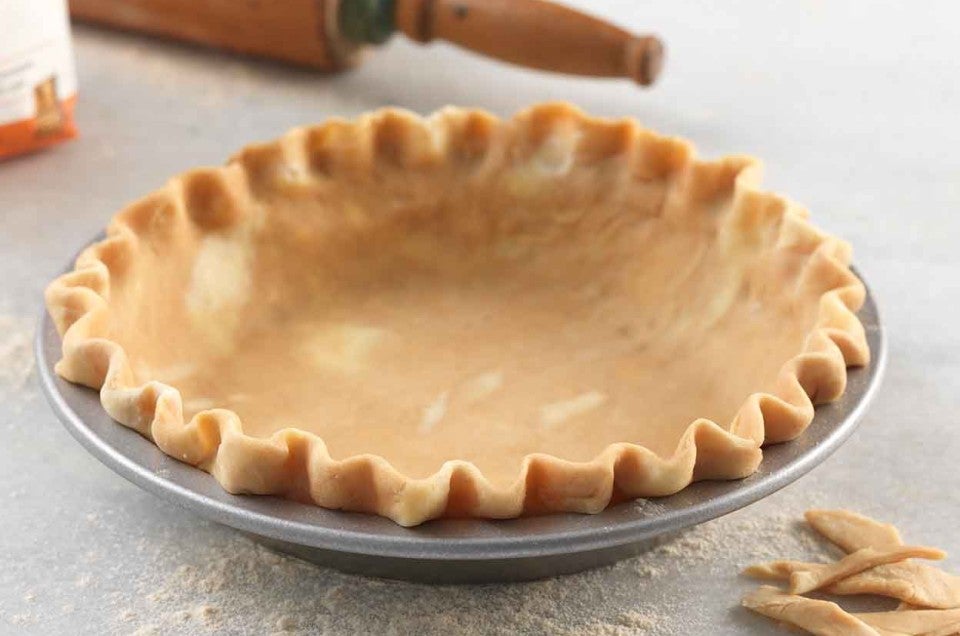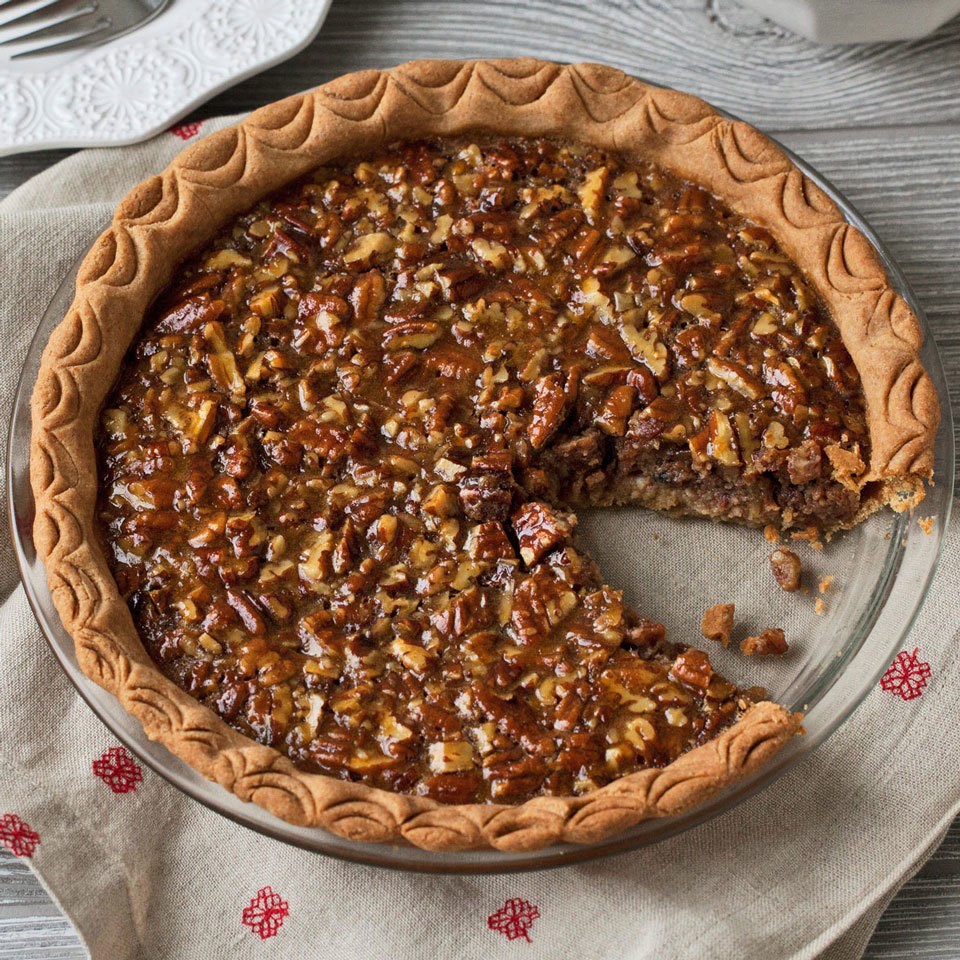Indulge in the wholesome goodness of homemade pie with our delectable whole wheat pie crust recipe. Crafted with the nutty flavor and nutritional benefits of whole wheat flour, this crust elevates your pies to a new level of culinary excellence.
Join us as we embark on a step-by-step journey to create a flaky, tender, and unforgettable pie crust that will impress your taste buds and nourish your body.
Whole wheat flour, the cornerstone of this recipe, boasts a wealth of fiber, vitamins, and minerals, making it a healthier alternative to traditional white flour. Its slightly earthy flavor adds a subtle depth to your pies, complementing both sweet and savory fillings.
Introduction
A whole wheat pie crust is a type of pie crust made using whole wheat flour. Whole wheat flour is made from the entire wheat kernel, including the bran, germ, and endosperm. This makes it a more nutritious option than white flour, which is made only from the endosperm.There
are several benefits to using whole wheat flour in pie crust. First, it provides more fiber than white flour. Fiber is important for digestive health and can help to keep you feeling full. Second, whole wheat flour is a good source of vitamins and minerals, including iron, magnesium, and zinc.
Third, whole wheat flour has a slightly nutty flavor that can add depth to your pies.
Ingredients
Creating a wholesome and delectable whole wheat pie crust requires a carefully curated selection of ingredients. These elements, when combined in precise proportions, orchestrate a symphony of flavors and textures that will elevate your culinary creations.
The following is a comprehensive list of the essential ingredients you will need:
- Whole wheat flour: This nutrient-rich flour forms the backbone of the crust, providing a robust and earthy flavor.
- Salt: A pinch of salt enhances the overall taste, balancing the sweetness of the filling and adding depth to the crust.
- Unsalted butter: Cold, unsalted butter, cut into small cubes, creates tender and flaky layers within the crust.
- Ice water: Ice water binds the ingredients together, creating a cohesive dough that is easy to roll out.
Alternative Ingredients for Dietary Restrictions
For individuals with dietary restrictions, here are some alternative ingredients that can be substituted:
- Gluten-free flour: For those with gluten intolerance or celiac disease, gluten-free flour can be used as a substitute for whole wheat flour.
- Vegan butter: To cater to vegan preferences, vegan butter can be used instead of unsalted butter.
- Plant-based milk: For those who avoid dairy, plant-based milk, such as almond milk or soy milk, can be used instead of ice water.
Step-by-Step s
Creating a delectable whole wheat pie crust is a simple process that yields a sturdy and flavorful foundation for your pies. Follow these steps to achieve a flaky and golden-brown crust that will elevate your baking endeavors.
Before starting, ensure you have all the necessary ingredients and equipment. This will help streamline the process and prevent any interruptions.
Measuring and Mixing the Dry Ingredients
- In a large bowl, combine the whole wheat flour, salt, and sugar. Use a whisk or a fork to thoroughly combine the ingredients, ensuring an even distribution.
- The salt enhances the flavor of the crust, while the sugar adds a subtle sweetness that balances the earthy notes of the whole wheat flour.
Cutting in the Butter
- Add the cold, cubed butter to the dry ingredients. Use a pastry cutter or two forks to cut the butter into the flour mixture until it resembles coarse crumbs.
- Avoid overworking the butter, as this can result in a tough crust. The goal is to create small, pea-sized pieces of butter that will create flaky layers when baked.
Tips and Variations
Mastering the art of creating a flaky and tender pie crust requires a combination of technique and knowledge. Here are a few essential tips to guide you towards a perfect whole wheat pie crust:
- Keep the ingredients cold: Cold ingredients prevent the gluten in the flour from developing too much, resulting in a more tender crust. Use chilled butter or shortening, and work quickly to avoid warming the ingredients.
- Do not overwork the dough: Overworking the dough can toughen the crust. Mix the ingredients until just combined, and avoid excessive kneading or rolling.
- Chill the dough before rolling: Chilling the dough for at least 30 minutes allows the gluten to relax, making it easier to roll out without tearing.
- Roll the dough between two sheets of parchment paper: This prevents the dough from sticking to the rolling pin and ensures an even thickness.
- Trim the edges: Use a sharp knife to trim the edges of the rolled-out dough to create a clean and even border.
Variations
The basic whole wheat pie crust recipe can be adapted to create various flavors and textures. Here are a few popular variations:
- Spiced Pie Crust: Add a teaspoon of ground cinnamon or nutmeg to the flour mixture for a warm and aromatic crust.
- Herb Pie Crust: Incorporate a tablespoon of chopped fresh herbs, such as thyme, rosemary, or sage, into the dough for a savory twist.
- Flaky Pie Crust: Use a combination of butter and shortening in the dough to create a particularly flaky crust.
- Gluten-Free Pie Crust: Substitute gluten-free flour blends for the whole wheat flour to create a crust suitable for those with gluten sensitivities.
- Sourdough Pie Crust: Use sourdough starter instead of water to create a tangy and flavorful crust.
Troubleshooting

Encountering difficulties while crafting a whole wheat pie crust is not uncommon. However, understanding the potential pitfalls and their remedies can empower you to overcome these challenges and achieve a delectable result.
Below are some common problems and their corresponding solutions:
Dry and Crumbly Dough
- Cause: Insufficient moisture in the dough.
- Solution: Gradually add small amounts of cold water, 1 tablespoon at a time, and work it into the dough until it just comes together.
Tough and Chewy Dough
- Cause: Overworking the dough.
- Solution: Handle the dough as little as possible. Mix the ingredients just until they are combined and avoid kneading.
Cracked or Broken Crust
- Cause: Uneven rolling or shrinking of the dough.
- Solution: Roll the dough out evenly and make sure to chill it thoroughly before baking. This will help prevent it from shrinking.
Soggy Crust
- Cause: Insufficient baking or undercooked filling.
- Solution: Bake the crust for a few minutes before adding the filling. This will help to create a barrier between the crust and the filling, preventing the crust from becoming soggy.
Conclusion

In summary, creating a delicious and nutritious whole wheat pie crust is a simple process that can elevate your baking creations. This versatile crust is perfect for both sweet and savory pies, and it’s a healthier alternative to traditional white flour crusts.
Whether you’re a seasoned baker or just starting out, we encourage you to give this whole wheat pie crust recipe a try. With its wholesome ingredients and flaky texture, it’s sure to become a staple in your kitchen.
Last Point
With a little patience and our expert guidance, you’ll master the art of creating the perfect whole wheat pie crust. Its versatility extends to any pie filling you desire, from classic apple to indulgent chocolate. So gather your ingredients, embrace the joy of baking, and let the aroma of freshly baked pie fill your home.
Your taste buds and loved ones will thank you for this culinary delight.
Answers to Common Questions
Can I use a food processor to make the pie crust?
Yes, you can use a food processor to combine the ingredients quickly and easily. Pulse until the dough just comes together, being careful not to overmix.
How do I prevent the pie crust from shrinking during baking?
To prevent shrinkage, make sure the dough is well-chilled before rolling it out. Additionally, prick the bottom of the pie crust with a fork to allow steam to escape during baking.
Can I make the pie crust ahead of time?
Yes, you can prepare the pie crust up to 3 days in advance. Wrap it tightly in plastic wrap and refrigerate until ready to use. Bring to room temperature for about 30 minutes before rolling out.
